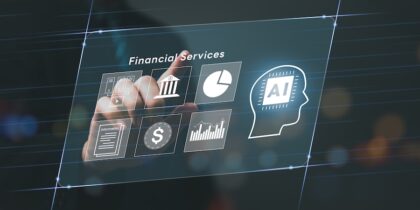Innovations in banking technology have spurred the highly competitive race toward creating the “bank branch of the future.” Established banking institutions are broadening their scope, fusing digital and physical technologies to contemporary operating models that embrace convenience and personalization.
Mobility integration is a core component of optimizing operating efficiencies while contouring the user experience for three types of banking customers. Scalable efficiencies, growth and positive user experience are the cumulative effects of merging mobility with the branch of the future.
Why Mobility?
Mobile devices continue to become more embedded into our daily routines. In fact, the average person spends five hours a day on their mobile devices and checks their smartphone over 85 times daily, according to a study by Nottingham Trent University. Millennials in particular are extremely reliant on their smartphones.
How Retail Banks Can Thrive in Today's Digital Age
Explore short- and long-term opportunities to transform brick-and-mortar bank experiences. Download Now
According to Goldman Sachs, the millennial generation is one the largest in U.S. history, with a population of 92 million. They’re the most skeptical of traditional banks and live up to the label of “nomads” who are quick to switch providers. In a Millennials and Money study by Facebook, 49 percent of millennials said they prefer to use their smartphones for banking, compared to just 9 percent who prefer their computers. Although this demographic has the most student debt and an average annual salary around $35,000, they’re set to inherit $30 trillion of wealth from parents and relatives in the coming years.
Emergence of eATMs
Monthly ATM transactions have surpassed teller transactions since 2015, and in early 2016, JPMorgan Chase announced the roll out of eATMs, which allow cash withdrawals of up to $3,000 during bank hours, including expanded bill denominations from $1, $5 and $20, up to $100. Customers can schedule and execute withdrawals through their mobile devices. These multifunctional eATMs will ultimately handle up to 90 percent of the tasks normally performed by human tellers, according to JPMorgan Chase. Similarly, Wells Fargo announced plans to launch their own eATMs with increased cash withdrawal limits up to $4,000.
A More “Human” Banking Experience
Contrary to the notion of a cold and frictionless setting, the bank branch of the future emphasizes high-touch and personalized banking to build deeper relationships. While the machines seamlessly handle smaller transactions, associates armed with AI-enhanced connected devices can pinpoint the most relevant solutions, products and services for a individual customer. Baby boomers who may have missed the technology train can receive a soft landing, as these branches will have demonstration areas and kiosks. Combining innovative banking technology with warm and knowledgeable human interaction can transform a time-consuming trip to the branch into a positive user experience.
JPMorgan Chase & Co.’s Consumer & Community Banking report revealed surprising transaction cost comparisons between the three channels: bank teller, ATM and mobile. A banking transaction with a human bank teller costs the bank $0.65, while an ATM transaction costs $0.08 and a mobile transaction costs $0.03. These efficiencies generate a cumulative effect on the bottom line, as evidenced by the 3 percent YOY expense reduction for JPMorgan Chase in Q2 2016.
Rather than detracting from branch banking, mobile banking improves efficiencies by allowing apps to handle the more common tasks, such as checking balances and making payments, transfers and deposits. This leaves the more complex resolutions to be handled through human interactions at the branch.
Mobility and the Branch of the Future
The bank branch of the future can cater to the nomadic, tech-savvy millennial generation that demands multichannel access, immediate responses, cost-savings, reliability and security. It can also softly usher the older generations into the more efficient digital era of banking. The flourishing consumer reliance on mobile devices emphatically dictates that mobility must not only be interwoven into the transformation process, but also remain at the forefront of tactical growth strategies to remain competitive.
Looking for more exciting technology for the finance world? Explore our full line of FinTech solutions.









